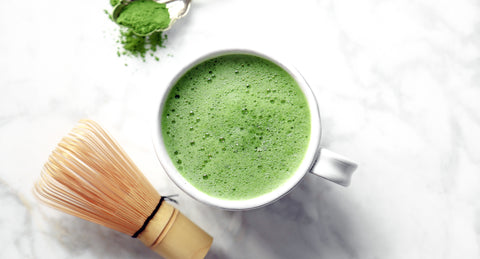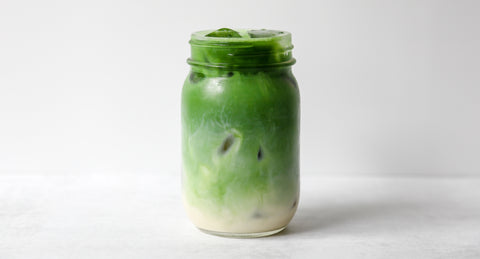Matcha, the vibrant green tea powder revered for its rich flavor and numerous health benefits, is not just a tea—it's a finely crafted art form. The process of making matcha is steeped in tradition, requiring meticulous attention to detail and a deep understanding of tea cultivation and processing. Here's a step-by-step breakdown of how this exquisite green tea powder is made.
1. Cultivation of Tea Plants
Shading the Tea Plants:
The journey of matcha begins in the fields of Camellia sinensis, the tea plant. About three to four weeks before harvest, the tea plants are shaded from direct sunlight using tarps or bamboo mats. This shading process is crucial as it increases chlorophyll levels, giving matcha its vivid green color, and boosts the production of amino acids, particularly L-theanine, which contributes to its unique umami flavor.
Growing Conditions:
The quality of matcha is highly dependent on the growing conditions. Ideal regions, such as Uji in Japan, offer the perfect balance of soil, climate, and altitude.
2. Harvesting the Leaves
Hand-Picking:
High-quality matcha is made from the youngest, tenderest leaves at the top of the plant. These leaves are carefully hand-picked to avoid any damage and to ensure that only the best leaves are selected. The timing of the harvest is critical, usually occurring in early May.
First Flush:
The first flush, or Ichibancha, refers to the first harvest of the year. This is when the leaves are most flavorful and nutrient-dense, making them ideal for premium matcha.
3. Steaming the Leaves
Preventing Oxidation:
Immediately after harvesting, the leaves are steamed to prevent oxidation and preserve their bright green color and fresh flavor. This process is quick, lasting only about 15-20 seconds, and it helps to maintain the leaves' nutrients.
4. Drying and Cooling
Air Drying:
After steaming, the leaves are dried using hot air to remove moisture. This step is crucial as it prepares the leaves for the next stages of processing. The leaves are then cooled to halt any residual enzymatic activity.
5. Removing Stems and Veins
Tenchamaking:
The dried leaves, now referred to as aracha, are sorted to remove any stems, veins, and coarse parts. This refined product is called tencha, and it's the pure leaf material that will be ground into matcha powder. Only tencha leaves are used to make matcha, ensuring a smooth and fine texture.
6. Grinding the Leaves
Traditional Stone Mills:
The tencha leaves are ground into a fine powder using traditional stone mills, often made of granite. This process is slow and deliberate, taking about an hour to produce just 30 grams of matcha. The slow grinding ensures that the leaves are not heated, preserving their delicate flavors and nutritional content.
Modern Alternatives:
While traditional stone mills are still used for the highest quality matcha, some producers use modern ball mills or jet mills to speed up production. However, these methods can affect the final quality, making stone-ground matcha the preferred choice for connoisseurs.
7. Quality Control and Packaging
Sifting:
After grinding, the matcha powder is sifted to remove any larger particles, ensuring a consistent and smooth texture. This final step in quality control guarantees that the matcha dissolves easily in water, providing a creamy and frothy cup.
Packaging:
Matcha is highly sensitive to light, air, and moisture, which can degrade its quality. Therefore, it is carefully packaged in airtight, opaque containers to protect it from these elements. Often, matcha is stored in small tins or resealable bags and kept refrigerated to maintain its freshness.
Conclusion
The process of making matcha is an intricate blend of traditional practices and modern techniques, each step contributing to the final product's exceptional quality and flavor. From the meticulous cultivation and careful hand-picking to the precise grinding and packaging, every stage is crucial in crafting the perfect matcha. Whether enjoyed in a traditional tea ceremony or as a modern latte, matcha's journey from leaf to cup is a testament to the artistry and dedication of its producers.



